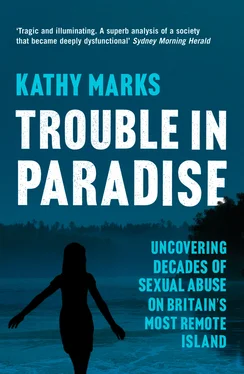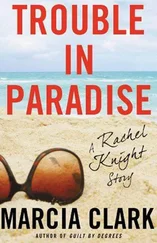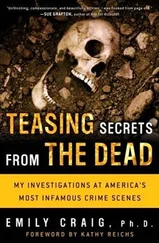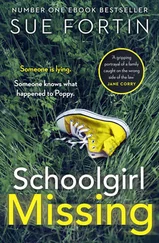On another occasion, when a woman was seriously ill, her husband contacted a specialist in California via ham radio. (Until recently, the only health professional on Pitcairn was a nurse.) The doctor proffered a long-distance diagnosis, and Steve, on his instructions, fashioned two surgical instruments which the nurse then used to perform an emergency procedure. The woman believes that Steve saved her life. ‘It was a miracle, and he was part of that miracle,’ she says.
Steve himself walks with a limp, the legacy of a teenage accident that has required two hip replacements. Nevertheless, he is physically equal to Pitcairn’s tough environment. He is said to be good company, and an entertaining host. He has something else, too—an ‘X-factor’, one outsider calls it, saying, ‘You can feel it as soon as he walks in. He carries himself like a leader.’
The Adventist Church filmed a series of documentaries about Pitcairn; watching them while on the island, I was struck by the way that Steve dominated nearly every scene—leading a group of young men off on motorbikes to hunt wild goats; debating the design of a new longboat with New Zealand engineers; driving around in a Mini Moke, the island’s one car; and giving the signal for Christmas presents to be distributed in the square. Steve even built the Pitcairners’ coffins.
To his fellow islanders, he was the linchpin of the community. Nothing happened without Steve’s say-so, and if he was away temporarily, on Norfolk Island, for instance, the others would still consult him. ‘Steve liked to be boss,’ says Tony Washington, a New Zealander who taught on Pitcairn in the early 1990s. ‘He had more say than Jay [Warren], although Jay was magistrate. When we went on a trip to Henderson [a neighbouring island], it was Steve who decided when we should come back.’
Neville Tosen describes him as ‘the evil genius who ruled Pitcairn’. He adds, ‘And yet I came to recognise him as a person of ability. He was smart. He understood the island and the way things were done. He could think his way through problems and come up with a solution. He was the brains of the place.’
Others say that Steve surrounded himself with yes-men and treated Pitcairn as his personal fiefdom. He would turn up late to communal dinners, knowing that no one else would start eating without him. ‘Pitcairn was an oligarchy,’ says Leslie Jaques, who has succeeded Leon Salt as Commissioner. ‘Steve ruled, and everyone else did what they were told. The way the community was run was medieval.’
There was an in-crowd, but not everyone in it was equally favoured. The island’s pecking order was quite intricate, it seems, and was reflected in the jobs that people did, and even by their positions in the longboat. As one British official observes, ‘It was almost like an Indian caste system. You had your place in society, and you never moved from it.’
For six decades the mainstay of the Pitcairn economy was stamps. First issued in 1940, they became the cream of many a collection, coveted because of the island’s colourful history and exotic location. So popular were they, in fact, that within a few years the community was able to build a new school and, for the first time, hire a professional teacher from New Zealand.
The proceeds from stamps went into a Pitcairn Fund that until a few years ago met the island’s running costs, as well as subsidising freight charges and the price of diesel fuel and building materials. The fund—latterly bolstered by sales of coins, phonecards and the .pn internet domain suffix—enabled the islanders to travel to New Zealand for further education and health care, and be paid salaries for carrying out ‘government jobs’. Capital items, such as longboats, tractors and generators, have always been provided by Britain, which is also responsible for maintaining the infrastructure.
As stamp collecting and letter writing fell out of fashion, the fund dwindled. Thanks to British subsidies, Pitcairn has nonetheless continued to enjoy full employment, in a manner reminiscent of a Cold War-era Communist state. The government jobs, equivalent to a public service bureaucracy, include deputy postmaster, trainee tractor driver, second assistant forester and keeper of John Adams’ grave. While there may be a whiff of absurdity about some of the jobs, who gets what is a serious matter, for the small stipends—NZ$500 (£200) a month for the island’s engineer, for instance—can go a long way on Pitcairn. And, until recently, who got what depended on your connections.
When Steve Christian’s daughter, Tania, arrived for an extended visit, she was promptly given two positions: museum keeper and librarian. Simon Young, the English newcomer, who had a horticulture degree and wanted to work in biosecurity, was made garbage collector. That had been the job of Hendrik Roos, the German settler. His wife, Nicola Ludwig, had been gardener of the cemetery.
Steve was not only mayor; he was chief supervising engineer—probably the most significant post on Pitcairn. (Randy was his deputy.) He was also the island’s dentist, having completed a course in New Zealand that qualified him to perform extractions. He was the radiographer. He was the number one tractor driver. He was the explosives supervisor, and a heavy machinery operator. He was a longboat coxswain. Steve had eight paid jobs.
The Christian clan has traditionally been the aristocracy on Pitcairn, but not all Christians are equal, and in Steve’s day his branch has been pre-eminent. The Warren clan also plays a prominent role in island affairs, securing some of the best jobs for family members. Despite lacking Steve’s force of personality and charisma, Jay is regarded as his main rival for power.
The mayor—or magistrate, as the office was formerly called—has always been a man. Betty Christian once nominated a woman. ‘Everyone laughed. They thought it was the biggest joke they’d ever heard,’ she says. Many women thought so too. When an outsider asked one older islander, Nola Warren, why a woman could not be in charge, she replied, ‘Because it’s never been, and it just can’t be.’
One of Pitcairn’s attractions is that people do not pay tax. Instead, they carry out ‘public work’: painting buildings, repairing the slipway, clearing the roads of undergrowth. They can go fishing if the weather is good, or tend their gardens and orchards. The islanders grow, among other things, mangoes, pineapples, passionfruit, strawberries, avocadoes, watermelons, pumpkins, peppers and sweet potatoes. Everything thrives in the volcanic soil and semi-tropical climate.
The locals trade their produce with the crews of passing ships, swapping fruit and fish for items such as timber, frozen chickens and cans of Coke. Their most valuable commodity, however, is the wooden carvings to which they devote most of their free time. The carvings are sold to passengers on the cruise ships that visit Pitcairn during summer, and also through the islanders’ websites. A Bounty replica can fetch US$120. Not long ago, on a cruise ship, a Pitcairn family made US$10,000 in one day.
Souvenirs account for three-quarters of the Pitcairners’ earnings. Most homes have a workshop equipped with power tools, and the carvings—while no longer produced by hand—are still made from the richly veined miro wood harvested locally or on Henderson Island, 15 hours away by longboat. (Henderson is one of three other islands, all uninhabited, in the Pitcairn group; the other two are Oeno and Ducie.)
Most of the Big Fence crowd are drinkers. For a long time Pitcairn was a dry island—in theory, at least. Alcohol is banned by the Seventh-day Adventist Church. In 1997 the locals voted to legalise its importation, but a licence is still required and drinking in public remains outlawed; in the outside world, Pitcairn retains its teetotal image. You cannot buy alcohol on the island, any more than you can buy cigarettes or ice cream or a carton of milk.
Читать дальше












